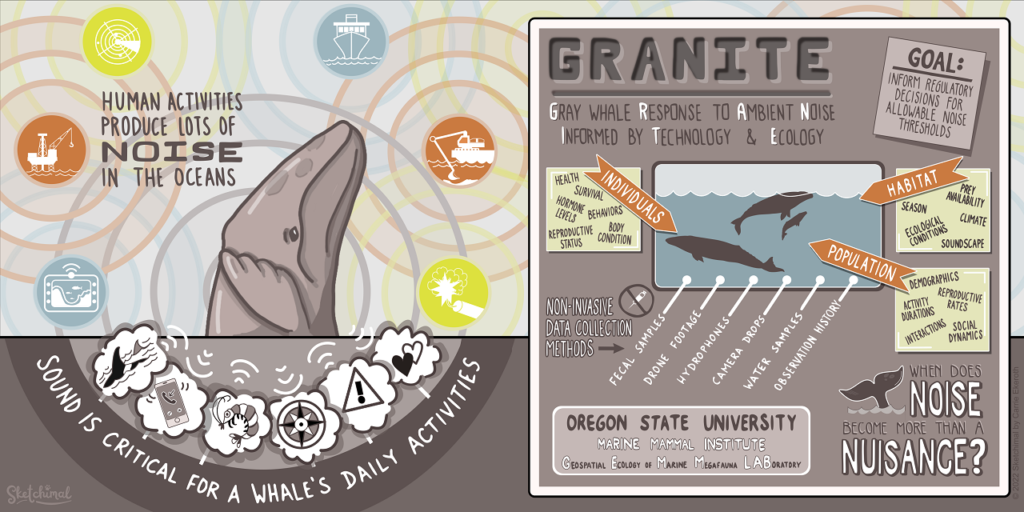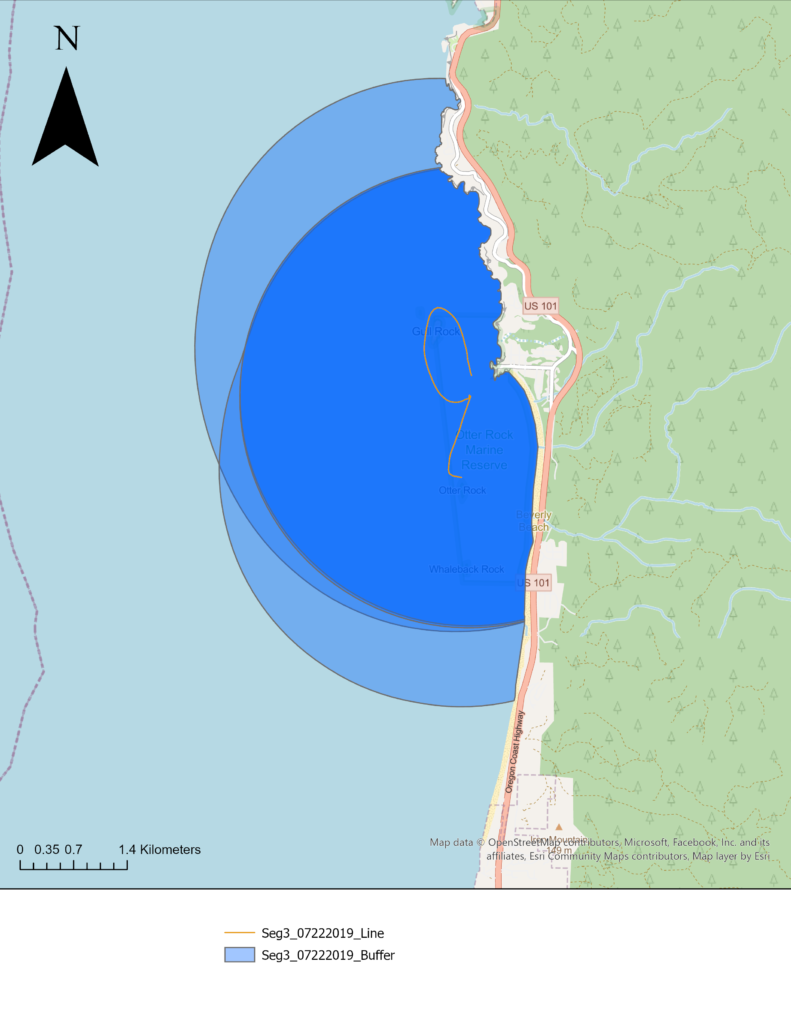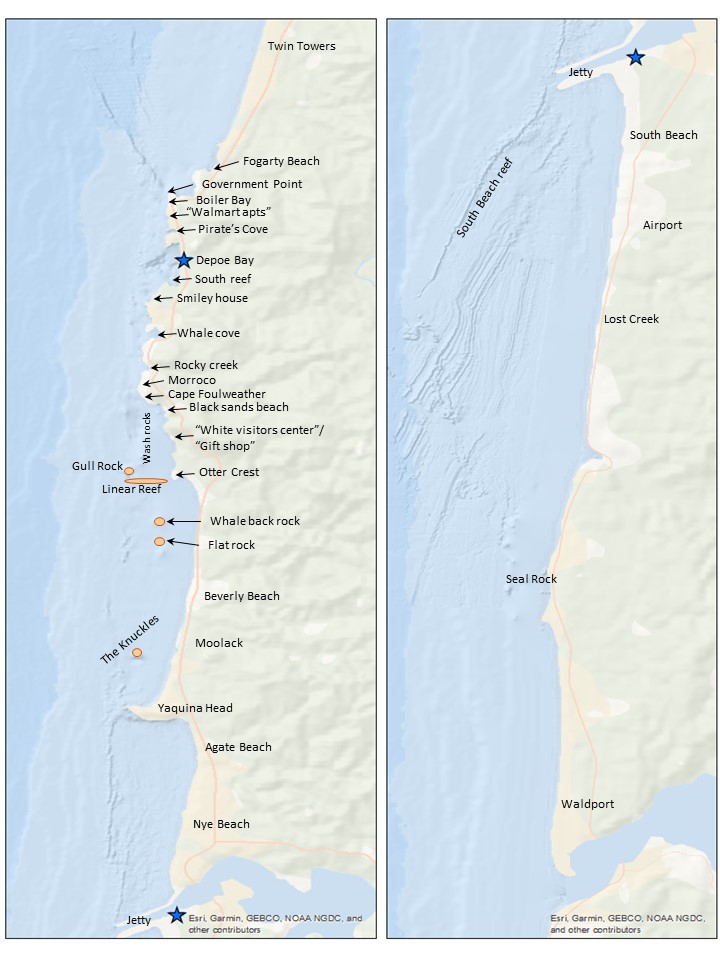By Morgan O’Rourke-Liggett, M.S., Oregon State University, Department of Fisheries, Wildlife, and Conservation Sciences, Geospatial Ecology of Marine Megafauna Lab
It is the end.
I graduated with a Master’s degree.
This journey began 10 years ago when I visited colleges as a high school junior.
Begin with the end in mind.
I knew I would major in science as an undergrad and focus on something more specific as a graduate student. Studying whales required a background in marine biology, which led to my undergraduate degree in oceanography with strong emphasis in fisheries and wildlife, policy, and ecology. My master’s degree was built on that and added specific skills in data collection, management, and analysis.
The last time I wrote a blog, I was sharing the details of the data management and intricacies of my master’s project. Part of what made that project so successful was knowing the end goal: we wanted to know the area surveyed based on visibility and a visual representation of it. This knowledge aided in the development of matrices for environmental conditions, assigning integer variables to text survey notes, and determining what toolboxes and packages would be the most appropriate for analysis.
As a visual learner, I like to sketch out what I am doing or draw it on a whiteboard in a concept board. This approach is something I have always done and was further reinforced as a necessary step in my programming classes early on in my master’s education. My professors would assign a problem that could be solved in programming by making a function or script of code. We were taught to write out what our end goals were and what inputs were available for the problem. From there, filling in what steps were needed would be added. That was a critical step that made writing many difficult Python and R for loops and functions easier to build.
This skill and mentality of “beginning with the end” in mind can also be useful in preparation for data collection. There are eleven common data types that are described with examples in Table 1. Understanding what data type is being collected could save several hours of data management and wrangling during the data analysis phase. From my experience in data analytics, some models yield more accurate results if the character data is manipulated to behave like an integer in R. Additionally, certain packages and toolboxes in R and GIS are only useful for certain data types.
| Data Type | Definition | Example |
| Integer (int) | Numeric data without fractions | -707, 0, 707 |
| Floating point (float) or Double | Numeric data with fractions | 707.07, 0.7, 707.00 |
| Character (char) | Single letter, digit, space, punctuation mark, symbol | a, ! |
| String (str or text) or Complex | Sequence of characters, digits, or symbols | Hello, +1-999-666-3333 |
| Boolean (bool) or Logical | True or false values | 0 (false), 1 (true) |
| Enumerated type (enum) | Small set of predefined values that can be text or numerical | rock (0), jezz (1) |
| Array | List with a number of elements in a specific order | rock (0), jazz (1), blues (2), pop (3) |
| Data | Date in YYYY-MM-DD fomat | 2021-09-28 |
| Time | Time in hh:mm:ss format or a time interval between two events | 12:00:59 |
| Datetime | Stores a value of both YYYY-MM-DD hh:mm:ss | 2021-09-28 12:00:59 |
| Timestamp | Number of seconds that have elapsed since midnight, 1st January 1970 in UTC | 1632855600 |
Beginning with the end in mind allows more clarity and strategies to be efficient and achieve your goal. It develops a better understanding of why each stage of data collection and analysis is important; why each stage in a career is important. It provides a road map for what will, undoubtedly, be an incredible learning experience.
References
Choudhury, A. 2022. What are Data Types and Why are They Important. https://amplitude.com/blog/data-types#datetime
Did you enjoy this blog? Want to learn more about marine life, research, and conservation? Subscribe to our blog and get a weekly message when we post a new blog. Just add your name and email into the subscribe box below.




